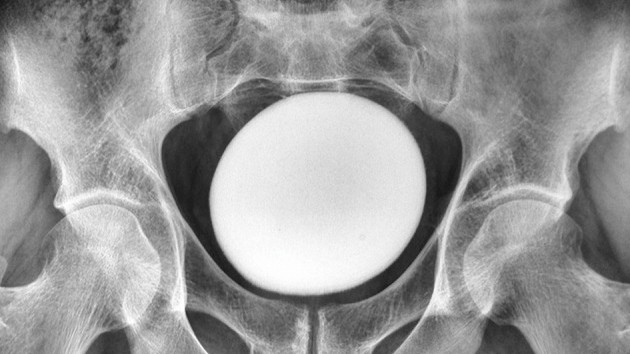4,000-Year-Old Mummies Are Half Brothers, DNA Analysis Shows

Two Egyptian mummies that rested next to each other for nearly 4,000 years are not full brothers, but rather half brothers, finds a new study that used advanced DNA sequencing.
The finding settles a 111-year-old mystery that began when excavators exhumed the two mummies in Deir Rifeh, a village 250 miles (400 kilometers) south of Cairo, in 1907. Both mummies — thought to be of noble lineage, based on their luxurious grave goods and the elite placement of their tomb — had the female name "Khnum-Aa" written on their coffins.
Khnum-Aa was referred to as the mother of both men, but studies in subsequent years couldn't confirm it. Now, by analyzing DNA extracted from the mummies' teeth, researchers have verified that these two ancient Egyptians had the same mother but different fathers. [In Photos: 3,800-Year-Old Coffin Holds Ancient Egyptian Woman]
"This is an extremely rare, perhaps unique, case where we have been able to test an ancient claim of a maternal relationship made in hieroglyphic texts, alongside the bodies of the individuals concerned," study co-researcher Campbell Price, a curator of Egypt and Sudan at the University of Manchester's Manchester Museum in England, told Live Science.
Blood brothers?
The two mummies — named Nakht-Ankh and Khnum-Nakht — lived during the 12th dynasty, which lasted from 1985 B.C. to 1773 B.C. Although Nakht-Ankh was older by at least 20 years, Khnum-Nakht died first, when he was roughly 40 years old, about six months before his brother, according to dates written on their bandages.
Further analyses revealed that the fathers of the men weren't named in the inscriptions but rather were referred to as a local ruler. With little else to go on, researchers tried a variety of techniques to determine whether the mummies were, in fact, brothers.
For instance, Margaret Murray and her colleagues, who studied the mummies when they were brought to the University of Manchester in 1908, concluded that the two were not related after studying the anatomy of the mummies' skulls and bodies. In the 1970s, an examination of the mummies' skin pigmentation led researchers to the same conclusion.
Get the world’s most fascinating discoveries delivered straight to your inbox.
"Previous analyses have been inconclusive or contradictory," Price said. "Only now has technology developed far enough to allow this type of study."
DNA analysis
To get to the bottom of the mystery, researchers extracted DNA from two molars from each mummy. However, the DNA quality in Khnum-Nakht was so poor, the researchers had to extract a third molar from him. (Khnum-Nakht likely died unexpectedly, as his mummy was not eviscerated — that is, the organs had not been removed — and the mummy was in worse condition than Nakht-Ankh, the researchers said.)
Then, the researchers analyzed the mitochondrial DNA (genetic material passed down from the mother) and Y chromosomal DNA (genetic material passed down from the father).
"The two mummies had identical mitochondrial profiles, [so] we can be sure they were related maternally," the study's lead researcher, Konstantina Drosou, a research associate at the Manchester Institute of Biotechnology, in the United Kingdom, told Live Science. "For the Y chromosome, the results were less complete due to the fact that the Y chromosome exists in only one copy per cell, whereas the mitochondrial DNA exists in multiple copies per cell." [In Photos: Ancient Egyptian Tombs Decorated with Creatures]
Even so, the Y chromosome results indicated that the two men likely had different fathers.
The study is published in the February issue of the Journal of Archaeological Science: Reports.
Original article on Live Science.

Laura is the managing editor at Live Science. She also runs the archaeology section and the Life's Little Mysteries series. Her work has appeared in The New York Times, Scholastic, Popular Science and Spectrum, a site on autism research. She has won multiple awards from the Society of Professional Journalists and the Washington Newspaper Publishers Association for her reporting at a weekly newspaper near Seattle. Laura holds a bachelor's degree in English literature and psychology from Washington University in St. Louis and a master's degree in science writing from NYU.



